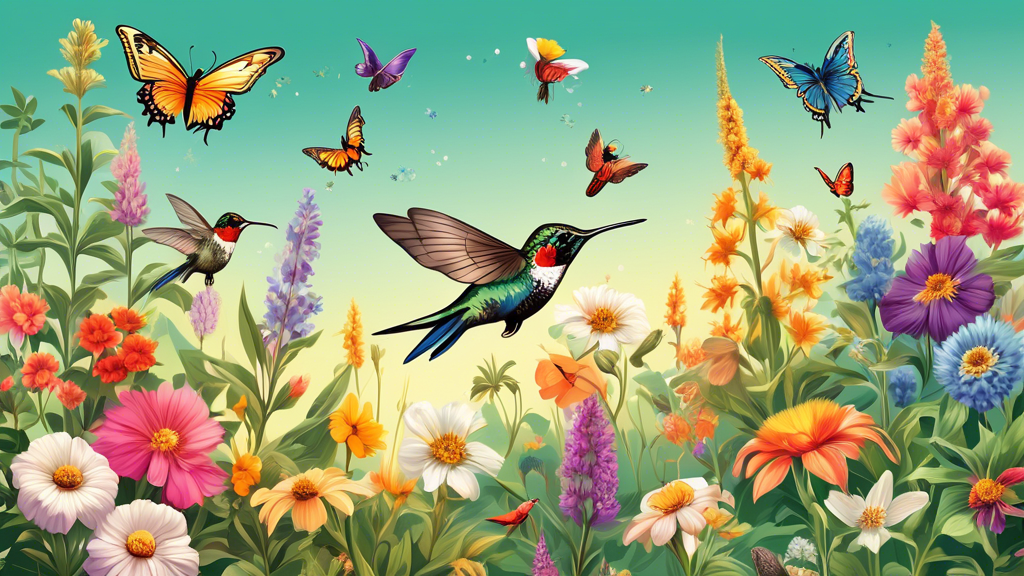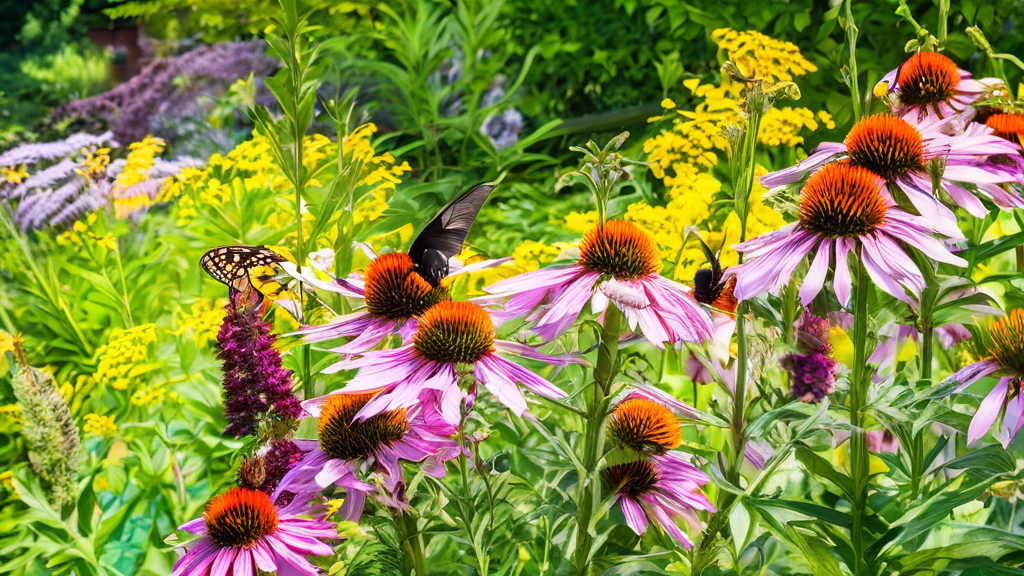Creating a pollinator garden using native plants is a fantastic way to support local ecosystems and boost biodiversity. Native plants, those that have evolved in a particular region over thousands of years, play a crucial role by providing food and habitat for local wildlife, especially pollinators like bees, butterflies, and birds. Using native species in your garden offers multiple benefits: they typically require less water, are more resistant to local pests, and reduce the need for chemical fertilizers or pesticides.
Including native plants in your pollinator garden not only fosters a healthy environment but also creates a vibrant and dynamic landscape. By choosing plants adapted to your region’s climatic conditions, you can ensure a thriving garden with minimal maintenance. These plants attract beneficial insects and birds, contribute to soil health, and help maintain the natural balance within the ecosystem.
In this article, we will delve into the best native plants suited for various regions, providing details on their planting requirements such as light exposure, water needs, soil preferences, and growth patterns. Additionally, we will offer practical tips on how to maintain a garden that serves as a welcoming haven for pollinators, ensuring it remains a flourishing and sustainable part of your outdoor space.
Benefits of Planting Native Species in a Pollinator Garden
Explanation of what native plants are and their role in local ecosystems
Native plants are species that have evolved naturally in a specific region over thousands of years. These plants are adapted to the local climate, soil, and other environmental conditions. They form an integral part of the local ecosystems by coexisting with native wildlife, including many pollinators such as bees, butterflies, and birds.
Advantages of using native plants for attracting and supporting pollinators
Using native plants in a pollinator garden offers many benefits. These plants provide the essential nectar, pollen, and habitat that local pollinators rely upon. Since native plants and pollinators have evolved together, the flowers of these plants are often better suited to the feeding habits and physical characteristics of the local pollinators. This symbiotic relationship ensures the health and survival of both plants and pollinators.
Native plants can also bloom at times that align with the life cycles of local pollinators. Seasonal blooming ensures a consistent food source throughout the pollinator’s active periods, promoting a thriving garden and ecosystem.
Environmental benefits
Beyond supporting pollinators, native plants offer several environmental advantages. One of the primary benefits is reduced water usage. Because they have evolved in the local climate, native plants generally require less irrigation than non-native species. This reduction in water usage is not only eco-friendly but also beneficial in areas prone to drought.
Additionally, the use of native plants helps bolster local biodiversity. By planting species that are naturally part of the ecosystem, gardeners can create habitats that support a wider variety of insects, birds, and other wildlife. This diversity helps build a resilient ecosystem capable of withstanding environmental changes and pressures.
Native plants are also often more resistant to pests and diseases, reducing the need for chemical treatments. This natural resistance leads to healthier plant growth and contributes to a safer environment for all garden visitors, from insects to larger wildlife and even humans.

When you’re crafting a pollinator garden, selecting native plants is key to creating a thriving space for bees, butterflies, and birds. Here are some top native plants for various regions along with essential information on their conditions and maintenance tips.
Eastern United States
1. Purple Coneflower (Echinacea purpurea)
A beloved perennial, the Purple Coneflower is favored by bees and butterflies. These plants prefer full sunlight and well-drained soil. They are drought-tolerant once established and bloom from early summer to fall.
2. Black-eyed Susan (Rudbeckia hirta)
Characterized by bright yellow petals and dark centers, Black-eyed Susans thrive in full sun or partial shade. They are adaptable to various soil types but prefer moderately moist conditions. These flowers attract numerous pollinators, ensuring a lively garden scene.
Western United States
3. California Poppy (Eschscholzia californica)
California Poppies flourish in full sun with well-draining soil. Known for their vibrant orange flowers, these annuals are drought-tolerant and require minimal water once established. They serve as magnets for bees and other pollinators.
4. Showy Milkweed (Asclepias speciosa)
Showy Milkweed is a critical host plant for Monarch butterflies. Growing best in full sun and dry, sandy soil, this perennial plant requires minimal care and provides essential nourishment for pollinators throughout its blooming season.
Midwestern United States
5. Bee Balm (Monarda fistulosa)
Known for its striking blooms and aromatic foliage, Bee Balm prospers in full sun to partial shade. It prefers moist, well-drained soil and attracts bees, butterflies, and hummingbirds. Regular deadheading encourages prolonged blooming.
6. Prairie Blazing Star (Liatris pycnostachya)
This tall perennial features spikes of purple flowers and is a favorite among butterflies. It grows well in full sun and well-drained soil, making it an excellent choice for adding height and visual interest to your garden.
Southern United States
7. Coral Honeysuckle (Lonicera sempervirens)
Coral Honeysuckle is a native vine that produces tubular red flowers. Thriving in full sun to partial shade, it prefers well-drained soil and attracts hummingbirds and butterflies. Pruning after flowering helps maintain its shape and vigor.
8. Snapdragon Vine (Maurandella antirrhiniflora)
This perennial vine produces delicate pink and purple flowers that are irresistible to bees and butterflies. It grows best in full sun to partial shade and well-drained soil, adding vertical interest to any pollinator garden.
Essential Maintenance Tips
Maintaining a pollinator-friendly garden involves a few simple steps:
- Watering Smartly: Water plants during early morning to reduce water loss through evaporation and help prevent fungal diseases.
- Soil Care: Enrich soil with organic matter, such as compost, to improve fertility and drainage.
- Deadheading: Regularly remove spent flowers to direct energy into new blooms, extending the flowering season.
- Avoid Chemicals: Minimize or eliminate the use of chemical pesticides and fertilizers to protect pollinators.
- Space Wisely: Plant in clusters to create a concentrated area of resources for pollinators, making it easier for them to feed and thrive.
By carefully choosing and maintaining native plants, you can create an inviting environment for pollinators, contributing to the overall health and biodiversity of your local ecosystem.
In conclusion, incorporating native plants into your pollinator garden provides numerous ecological benefits. Native plants play a critical role in maintaining local ecosystems by naturally attracting and supporting essential pollinators like bees, butterflies, and birds. This approach not only fosters a healthier environment but also reduces water usage and promotes biodiversity. By selecting plant species that are well-adapted to your specific region, you create a garden that thrives with minimal maintenance. Understanding the planting conditions, such as sunlight, water needs, and soil type for each native species, will help you maintain a vibrant and pollinator-friendly space. With a bit of knowledge and effort, you can create a flourishing haven for pollinators, contributing to the overall health of the ecosystem.


